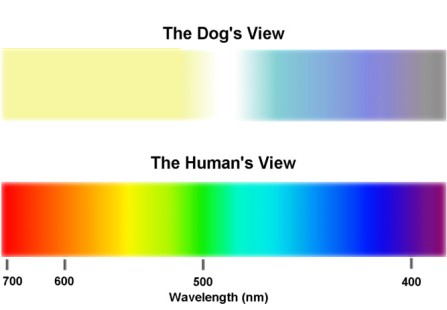On our walk through the neighborhood this morning my dog Jesse began to strain on the lead when he got within 20 feet of a certain object of his desire. It was a blue Toyota Prius. Not my blue Prius, mind you, but someone else’s, parked blocks away from where mine sits in front of the house. When Jesse reached the car he put his muzzle right up against car’s hatchback door, as if to say “Open Sesame!” Then he turned and gave me a look that said, “Let’s go to the beach!”
By that point in our walk we had already passed dozens of parked cars, and Jesse had shown no sign of interest in any of them, let alone any move to commandeer one for a day trip. He’s always ignored other Priuses parked around the neighborhood, cars that were the exact same model as mine, although come to think of it, those others were of a different color (red, black, silver, etc.) This blue car today was so close in appearance to mine that even I did a double-take.
So why did Jesse select it to be the “stuff [his] dreams are made on”?
I think the answer is the color blue.
For a long time it was assumed dogs could not see colors. A post on the website “WikiAnswer”, found here, echos that view. But recent scientific studies have come to a different conclusion. In an article entitled “How Dogs See Color” by Dana K. Vaughan, Ph.D., Dept. of Biology, University of Wisconsin, Oshkosh (available here), Dr. Vaughan reports that, yes, dogs can see colors, but somewhat differently than humans:
“These experiments showed that dogs do see color, but in a more limited range than that seen by normal humans, who see the rainbow of colors described by “VIBGYOR”: Violet, Indigo, Blue, Green, Yellow, Orange, and Red (plus hundreds of variations on these shades). Instead, dogs see “VIBYYYR” (Violet, Indigo, Blue, Yellow, Yellow, Yellow, and Red). The colors Green, Yellow, and Orange all look alike to dogs; but look different from Red and different from the various Blues and Purples. Dogs are very good at telling different shades of VIB apart. Finally, Blue-Green looks White to dogs.”
Dr. Mark Plonsky, a Professor of Psychology, also at the University of Wisconsin, presents slightly difference results here. His article includes an admittedly speculative color spectrum chart showing what your pooch likely sees:

One finding common to both studies is that dogs can readily discern the color blue. So blue is the color to select next time you buy a car, if you want your dog to have a chance of spotting your vehicle in a crowd.
It’s reasonable, I believe, to assume Jesse can recognize a Prius by its size and shape, and through his sense of smell (as the car’s factory installed tires and its brake system probably emit distinctive odors). But Jesse is able to find my Prius and his personal means of long-distance transport — or get to the point where he believes he’s found his Prius — only when he comes across those elements plus the color blue.
Meanwhile, I haven’t settled on what to say to Jesse if today’s episode recurs. This morning I simply said “No!”, yanked the lead, and walked on. But I feel Jesse deserves a fuller explanation, something to indicate he is mistaken to think he has found my (his) car, yet he shouldn’t feel bad since it’s an understandable mistake. So what voice command can contain than amount of nuance?
I’m thinking, maybe, “Close, but no cigar!”?